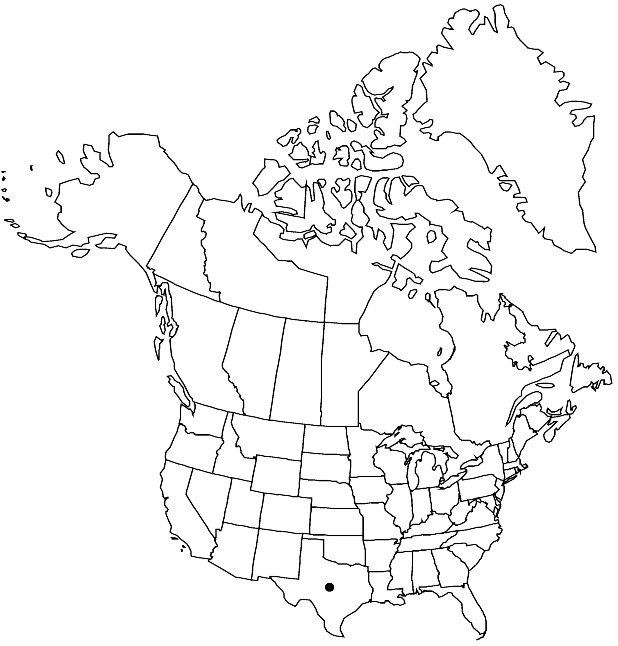Difference between revisions of "Paysonia grandiflora"
Novon 12: 381. 2002.
FNA>Volume Importer |
imported>Volume Importer |
||
| (6 intermediate revisions by 2 users not shown) | |||
| Line 8: | Line 8: | ||
}} | }} | ||
|common_names=Bigflower bladderpod | |common_names=Bigflower bladderpod | ||
| − | |basionyms={{Treatment/ID/ | + | |basionyms={{Treatment/ID/Basionym |
|name=Vesicaria grandiflora | |name=Vesicaria grandiflora | ||
|authority=Hooker | |authority=Hooker | ||
| + | |rank=species | ||
| + | |publication_title=Bot. Mag. | ||
| + | |publication_place=63: plate 3464. 1836 | ||
}} | }} | ||
|synonyms={{Treatment/ID/Synonym | |synonyms={{Treatment/ID/Synonym | ||
|name=Alyssum grandiflorum | |name=Alyssum grandiflorum | ||
|authority=(Hooker) Kuntze | |authority=(Hooker) Kuntze | ||
| − | }}{{Treatment/ID/Synonym | + | |rank=species |
| + | }} {{Treatment/ID/Synonym | ||
|name=Lesquerella grandiflora | |name=Lesquerella grandiflora | ||
|authority=(Hooker) S. Watson | |authority=(Hooker) S. Watson | ||
| − | }}{{Treatment/ID/Synonym | + | |rank=species |
| + | }} {{Treatment/ID/Synonym | ||
|name=Vesicaria brevistyla | |name=Vesicaria brevistyla | ||
|authority=Torrey & A. Gray | |authority=Torrey & A. Gray | ||
| − | }}{{Treatment/ID/Synonym | + | |rank=species |
| + | }} {{Treatment/ID/Synonym | ||
|name=Vesicaria grandiflora var. pinnatifida | |name=Vesicaria grandiflora var. pinnatifida | ||
|authority=A. Gray | |authority=A. Gray | ||
| + | |rank=variety | ||
}} | }} | ||
|hierarchy=Brassicaceae;Brassicaceae tribe Physarieae;Paysonia;Paysonia grandiflora | |hierarchy=Brassicaceae;Brassicaceae tribe Physarieae;Paysonia;Paysonia grandiflora | ||
| Line 38: | Line 45: | ||
|habitat=Dry areas, roadsides, meadows, rocky slopes, scrubland, with sandy, loose, well-drained soils | |habitat=Dry areas, roadsides, meadows, rocky slopes, scrubland, with sandy, loose, well-drained soils | ||
|distribution=Tex. | |distribution=Tex. | ||
| − | |discussion=<p>Paysonia grandiflora probably grows also in northeastern Mexico.</p> | + | |discussion=<p><i>Paysonia grandiflora</i> probably grows also in northeastern Mexico.</p> |
|tables= | |tables= | ||
|references= | |references= | ||
| Line 47: | Line 54: | ||
-->{{#Taxon: | -->{{#Taxon: | ||
name=Paysonia grandiflora | name=Paysonia grandiflora | ||
| − | |||
|authority=(Hooker) O’Kane & Al-Shehbaz | |authority=(Hooker) O’Kane & Al-Shehbaz | ||
|rank=species | |rank=species | ||
| Line 61: | Line 67: | ||
|publication year=2002 | |publication year=2002 | ||
|special status= | |special status= | ||
| − | |source xml=https:// | + | |source xml=https://bitbucket.org/aafc-mbb/fna-data-curation/src/2e0870ddd59836b60bcf96646a41e87ea5a5943a/coarse_grained_fna_xml/V7/V7_1003.xml |
|tribe=Brassicaceae tribe Physarieae | |tribe=Brassicaceae tribe Physarieae | ||
|genus=Paysonia | |genus=Paysonia | ||
Latest revision as of 22:29, 5 November 2020
Annuals; mostly densely pubescent, sometimes glabrous, trichomes usually 5-parted. Stems erect to decumbent at base, (unbranched or branched), 2–7 dm, (pubescent proximally, trichomes branched). Basal leaves: blade (oblanceolate), 5–15 cm, margins irregularly dentate to 2-pinnatifid, (apex acute to obtuse), surfaces densely pubescent (trichomes erect, 5-parted). Cauline leaves (usually overlapping); blade oblong to lanceolate, 1–4 cm, base (proximal) often narrowed and cuneate, (distal) auriculate, margins dentate to toothed, (apex acute to obtuse, densely pubescent on midrib, trichomes branched). Fruiting pedicels ascending to divaricate, straight to slightly curved upward, 10–20 mm, densely pubescent. Flowers: sepals 5–7 × 2–3 mm, densely pubescent; petals yellow, 8–12 × 6–9 mm, (abruptly narrowed to a short claw), apex rounded to slightly emarginate; filaments dilated basally, (3–4 mm, anthers sagittate, 2.5–3 mm, glandular tissue projecting, subtending paired stamens, nearly surrounding bases of single stamens). Fruits sessile or subsessile, globose or subglobose (slightly longer than broad), 4–6 × 4–5 mm; valves glabrous; replum not flattened; septum complete, (translucent); ovules (8–)16–28(–40) per ovary, (attached in proximal 1/2); style 1–1.5 mm, glabrous; stigmas expanded. Seeds orbicular, 2.5–3 mm. 2n = 18.
Phenology: Flowering Mar–May.
Habitat: Dry areas, roadsides, meadows, rocky slopes, scrubland, with sandy, loose, well-drained soils
Discussion
Paysonia grandiflora probably grows also in northeastern Mexico.
Selected References
None.
